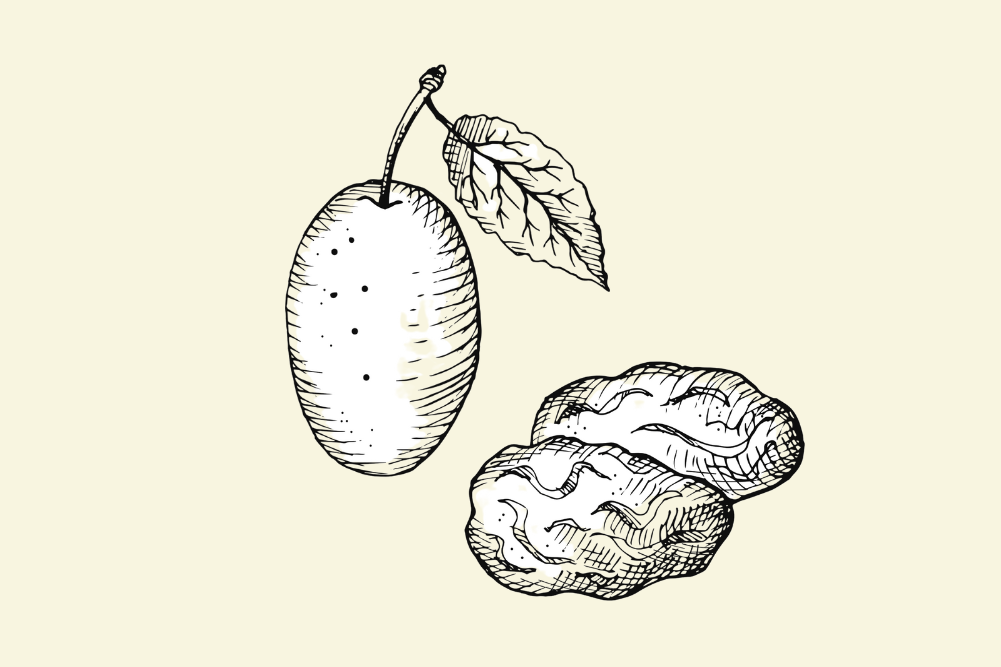Yoga for a broken heart
Have you felt those earth-shattering, spirit-crushing days of heartbreak? No matter who you are, where you’re from, it’s an inescapable reality of the human condition … heartbreak.
There’s a reason why they call it that, right? Physically and emotionally you feel it directly in the heart and lungs. Sometimes it feels like an elephant is sitting on your chest and you become short of breath. Some people develop a form of heart disease which mimics the symptoms of a heart attack, aptly named “broken heart syndrome” (a disease experienced predominantly by women).
Jade Clark, Chinese medicine physician from the White Owl Clinic says from a Traditional Chinese Medicine (TCM) perspective we also feel heartbreak in these physical and energetic places. “Lung energy deals with the grief that comes from a relationship ending, whereas heart energy deals with the pain of losing the connection and love shared. The quality of these organs influences and can determine how you process the experience. Easy to see then how the internal organ health can be the difference between emotional hell or a stressful yet healing and emotionally growth-producing experience.”
As you learn to sit in discomfort in a hip opener, so too must you learn to sit in your emotional discomfort.
Sometimes you get “lovesick” and feel it more in the stomach. You’re digesting so much emotionally that you might lose your appetite. Or there can be a feeling of dread hanging out in the belly, giving you the not-so-fun variety of butterflies.
From a yogic perspective, these energetic centres or chakras are completely out of balance. Anahata, located in the heart centre, can mean “unstruck, unhurt, unbeaten”, and at a time when the heart is pretty pummelled, it can feel struck. Anahata is associated with the element of air. Manipura, around the navel centre, can mean “lustrous gem of the city”, where our ego and self-worth reside. The ego can be shattered or trying to assert itself and self-worth diminished. The element associated is fire. Swadhistana in the lower belly can mean “one’s own abode” or “taking pleasure from”. Post-heartbreak it is not necessarily pleasurable to be with oneself. Swadhistana is also the emotional realm and seat of intimate relationships, represented by the element of water, thus all the waterworks in the form of tears.
According to Ayurveda, the vata dosha is also related to the air element. During a time of heartbreak while anahata chakra is distorted, there can be a massive vata imbalance. Shortness of breath, loss of appetite, ungroundedness, lack of sleep and anxiety all equate to excess air or vata.
Alternatively, there could be a kapha imbalance. Kapha is the element of water and earth. During heartbreak, this muddy dosha may manifest as feeling melancholy, slow, heavy, with no desire to take action, and respiratory sluggishness. The water element is completely overflowing — just like swadhistana chakra.
Feel all the feels
On writing this article, I recognised there was an expectation I would probably create a heart-opening sequence, because we feel it’s the time to “open the heart”. But I disagree. Yes, we absolutely have to feel the feels during the process of a broken heart. We don’t run away from the experience.
“To stay with that shakiness, to stay with a broken heart, with a rumbling stomach, with the feeling of hopelessness and wanting to get revenge … that is the path of true awakening,” writes Pema Chödrön.
According to hatha yoga there will always be the ha or the sun, and the tha or the moon. There will always be the inhale and exhale, yin and yang, darkness and light. That’s the yogic deal. You can’t have love without loss. Every aspect of yoga practice demonstrates that. So the idea is not to run away from the icky bits — quite the opposite. Just as you learn to sit in discomfort in a hip opener, so too must you learn to sit in your emotional discomfort.
No matter how stormy the seas of life are, when you anchor in your centre you can weather anything.
However, the pointy end of heartbreak is not the time to pull in and reflect, analysing what happened and asking, “How the hell did I get here?” It’s not the time to go into story. It’s the time to feel the feels fully and recognise them as that: feelings. Big feelings, sure, but feelings that will, eventually, pass. Impermanence is part of life’s package.
Yoga teacher Manorama D’Alvia says of relationships: “You’re going to love and be attached to people. There’s nothing wrong with love and attachment. Expecting something from that love that it cannot possibly give you is the problem.” You know this deep down, but in the storm of heartache it’s very hard to accept.
Much of the time in the midst of heartache, there are practicalities to be dealt with. These things can feel insurmountable, like unravelling shared decades together, resources, property, pets and kids. There’s an inner strength that is required to get on with things that need to be done, rebuild your sense of self and start the process of letting go.
What can you do to start the process of healing a broken heart?
- Restore balance to the energetic body, rebuild prana and feel all the feels from a place of inner strength.
- Reconnect to the warrior within. In the Bhagavadgita, Arjuna doesn’t want to fight. We’ve all felt this at some point: the moment we are not sure we have it in us to get through this process, especially when matters of the heart are involved. But Krishna tells him he has to fight. No matter how insurmountable life feels in the midst of heartbreak, the yoga philosophy is inviting us to warrior up first and foremost. Do the inner work: there is no option B. Surviving heartbreak requires a degree of warrior strength. This is what you want to nurture, while staying in parasympathetic nervous system and not overloading the body with fight or flight chemicals. You need to bring in some grounding and fire practices to do this.
- Come back to your centre, that part of yourself that is not dictated by your relationships with others. No matter how stormy the seas of life are, when you anchor in your centre you can weather anything.
- Practice the first yama in Patanjali’s Yoga Sutras: ahimsa. Ahimsa is the practice of non-violence and compassion. Fostering compassion for yourself as feelings arise and being patient with the process are fundamental to healing. And just because you must find warrior strength does not mean you harden your heart. In fact, you do the opposite. Heartbreak can make you love bigger and be softer and kinder in the long run.
- Watch your breath. Be conscious when the breath is moving up into the chest and becoming short. Take a long-extended exhale (or a few if you have the time), to slow the pulse and breath down. During asana practice, focus on breathing in and out through the nose to stay in parasympathetic nervous system and keep the exhales nice and long. Periodically open the mouth on the exhale to release anything that is coming up.
Chair pose (uttkatasana)
Take big toes to touch and separate heels so that second toe lines up with centre of heel. Bend knees and reach the arms up. Keep weight spread across four corners of feet. Shift the shins back trying to set knees over ankles. Imagine holding a piece of paper between the knees, firming outer hips in, and hugging everything to the midline. Pick the frontal hip bones up and descend sit bones to the earth. Wrists in line with shoulders, keep reaching the fingers up, but only to the point where the shoulders don’t travel up towards the ears. Take five conscious breaths. Start to bend the knees a little deeper, and deeper still, lowering the buttocks to the earth. Float toes off earth for the next pose.
Boat pose (navasana)
Sit on buttocks, knees bent and feet together. Lift toes off the
earth and feel the belly engage. Imagine again a piece of paper between the knees and firm outer hips in. Stay here, keeping the spine tall, extending all four sides of the trunk, or to deepen, take shins parallel to the earth. Stay here, or if you can keep side waist and spine long, collar bones broad, extend the legs so toes are in line with the eyes. Front body hugs into back body. Take five breaths, bend knees again and lower feet to earth. Rest for a breath. Repeat three times.
Reverse tabletop (ardha purvottanasana)
Sit with legs extended in dandasana. Place hands on the ground a few inches behind the hips, with fingers facing forward. Ultimately when you lift hips, the wrists should be set under shoulders. Pull tips of shoulders back in line with collar bones. Bend knees so that feet are hip width apart and a little away from buttocks so that when you lift hips the heels will be directly under hips. Firm the hands and feet down and lift hips on an inhale breath. Make sure four corners of feet are pressing down. If it’s comfortable extend the neck, opening throat, moving crown of head back towards earth. Take five conscious breaths and then lower buttocks back down.
Squat or garland pose (malasana)
Take the feet a little wider than hip width. Bend the knees deeply. Set toes in line with knees. Spread weight evenly over the feet. Place hands in prayer, forearms parallel to earth. Press elbows into knees while keeping palms together. Climb the spine longer by grounding down into the feet and pressing the crown of the head up, keeping chin parallel to earth. Take five breaths.
Warrior 2 (virabhadrasana 2)
Step the feet wide, about one leg length apart, heels in line. The toes should be turned in a little. Lift the quad muscles and pelvic bones up. Climb the ribs up and away from hips. Look at the right leg and as you turn the right toes out, setting the right foot now parallel with the long side of the mat, wrap the right thigh bone out and around to set the knee at a 90 degree angle, over the ankle, in line with the second toe. The left hip will come forward a little and won’t be square. Pick the front of the pelvis up and reach the arms out so they’re parallel with the earth. Take five breaths, reset with legs extended and both feet turned in, and swap over to the left leg.
Reclining bound angle pose with lower belly breath (supta baddhakonasana)
Lie on the back, bend knees up, take soles of feet together and open knees out to the side. Place hands on lower belly. Inhale slowly in through the nose filling up the lower belly, feel the hands rise, exhale let the breath go out though the mouth. Return to breathing as normal. Shift the hands up to the rib cage. Inhale to slowly fill the side and back ribs up with breath, exhale, let the breath go out through the mouth. Shift hands to chest and inhale all the way to the top of the chest, exhale, let the breath go. Place hands where comfortable and put this three-part breath together. Inhale, fill lower belly, ribs and chest. Exhale, let go of the breath and relax. Repeat another four times in this way.








